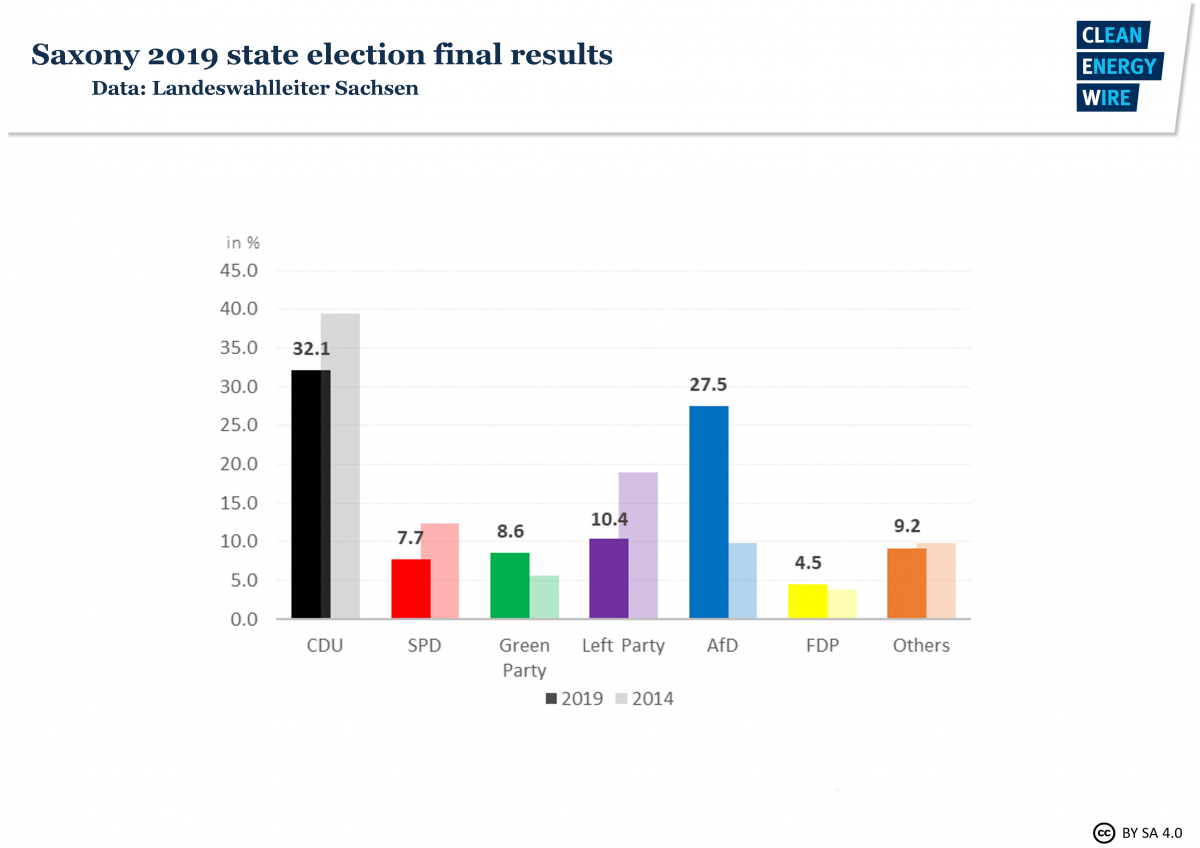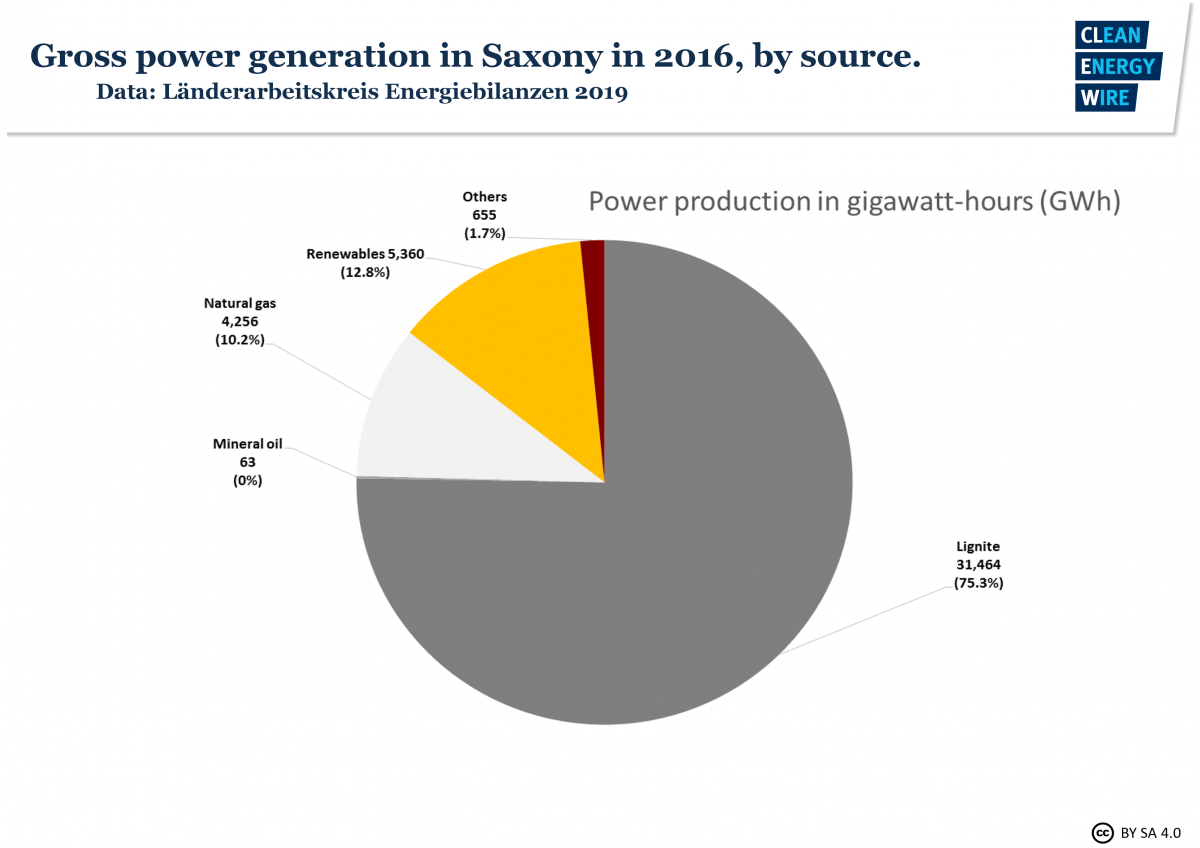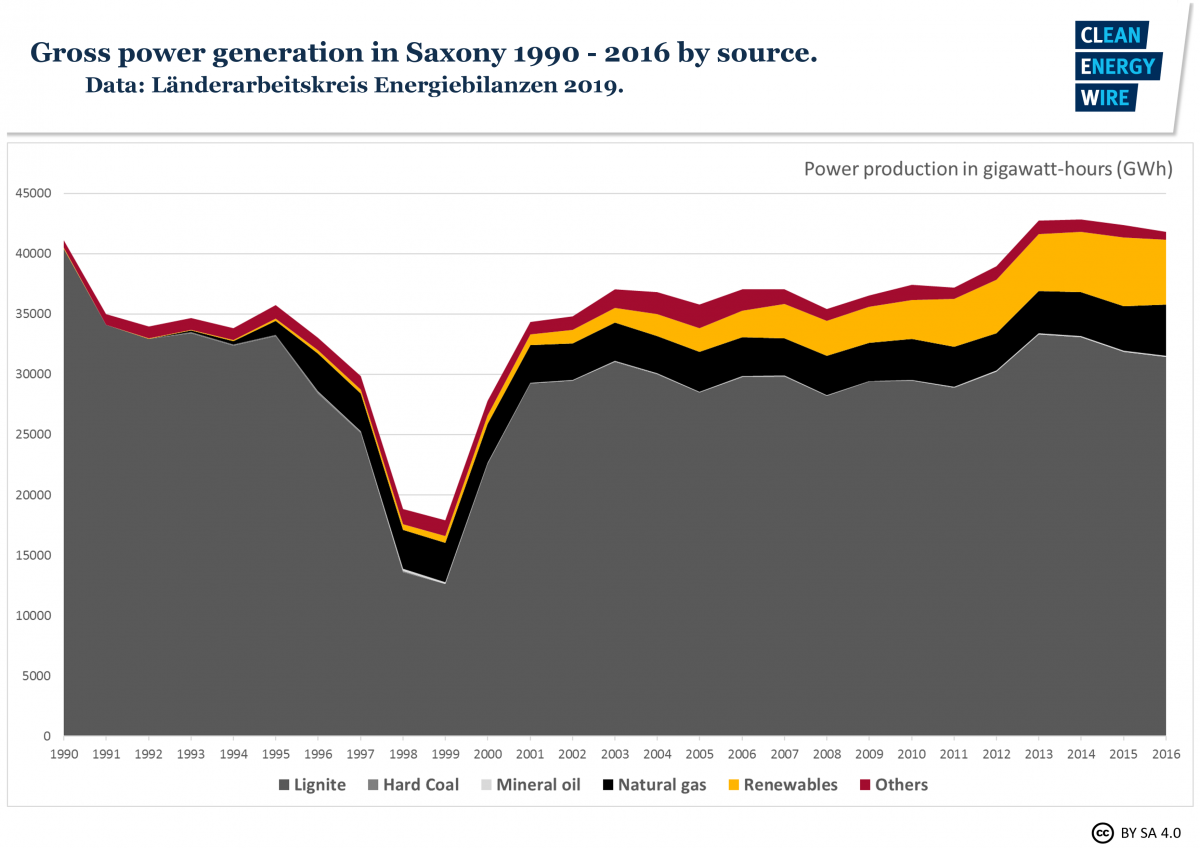Facts on the German state elections in Saxony
[Also read our election preview: East German state elections pose litmus test for coal exit plans]
Saxony
Population: 4,081,308 (September 2018)
State Capital: Dresden
Votes in the Bundesrat: 4 out of 69
Government since December 2019:
Christian Democratic Union of Saxony (CDU), Green Party of Saxony (Green Party) and Social Democratic Party of Saxony (SPD)
Prime Minister and Head of Government: Michael Kretschmer (CDU)
State Minister for Economic Affairs, Labour and Transport: Martin Dulig (SPD)
Minister of State for Energy, Climate Protection, Environment and Agriculture: Wolfram Günther (Green Party)
State parties’ websites:
CDU, AfD, SPD, Green Party, Left Party, FDP
Climate and energy policy in Saxony
In their coalition agreement, the CDU, SPD and the Greens stated they "want to anchor climate action as a state goal in the Saxon constitution." Over the next five years, the government says it will create the planning and legal prerequisites for the state to be able to cover its electricity demand completely with renewable energies once lignite use in Germany has ended. The coalition supported the national coal compromise and promised that no areas in the lignite mining region Lusatia will be used nor relocated which were not required for the operation of power plants under the coal exit compromise. The government plans to adopt a state master plan for energy and climate action.
In January 2019, Saxony’s former state government decided to scrap a revision of the state’s energy and climate programme from 2012 which had been promised in the coalition agreement between SPD and CDU (2014). The update was meant to focus particularly on the expansion of renewables in Saxony, and its cancellation was criticised by several energy, transport, agricultural and environmental associations. Even before this political decision, a status report on the state by the German Renewable Energies Agency (AEE) concluded that Saxony’s energy policy stood “more for continuity than for change”. State premier Michael Kretschmer said in July 2019 that the federal government was “frightening” the population with the debate about climate action measures such as higher prices for fossil car fuels and domestic flights.
Saxony’s energy and climate programme from 2012 aims for a share of renewable sources in the state’s gross electricity consumption of 28 percent by 2022. The CDU and SPD’s coalition agreement from 2014 however stated that Saxony wants to gradually become independent of fossil fuels and vowed to orientate itself towards the federal government’s targets for renewable energy expansion (at the time) of 40-45 percent of gross electricity consumption by 2025 and 55-65 percent by 2035.
An energy state in transformation
Saxony’s identity as an energy state began with its reliance on lignite but is now converting the region into a hub for innovative energy research, e.g. involved in projects on hydrogen, battery production and electric and intelligent mobility. The state presented a master plan for energy research in 2018, proposing that the region’s existing competencies in microelectronics, nanotechnology material sciences and more could provide solutions within critical energy transition areas such as sector coupling and the digitalisation of the energy industry. Economy minister Martin Dulig, at the time, however stressed that the plan was not meant to be construed as an implementation of the energy transition, as Saxony was pursuing a “traditional energy policy,” in which the use of lignite was important for supply security.
Around 27,000 jobs still depend on lignite in the Lusatian and Central German lignite regions, which are located partly in Saxony. Germany’s planned exit from coal-fired power generation will greatly affect the state, which has been promised two billion euros per year until 2038 by the federal government in order to encourage structural change in the mining regions. With an immediate investment programme, Saxony is already planning to support projects focused on geothermal energy and fuel cell trains, among other things. A threatened Siemens site in the state, whose closure would have endangered more than 700 local jobs, is now to be joined by a laboratory for hydrogen research and an innovation campus to attract high-tech companies instead. Meanwhile, lignite mine and power plant operator LEAG is building a large-scale battery by their Schwarze Pumpe power station, on the border between Saxony and the neighbouring state of Brandenburg, where elections will also be held in September.




